What is Trojan.HTML.Phish? The Trojan.HTML.Phish is a dangerous security threat. If antivirus detects this threat in the pages that you open in the Chrome, Firefox, Internet Explorer and MS Edge then it means that a malware get installed on your computer. Most often, antivirus software can remove harmful code (Trojan.HTML.Phish itself) from pages, but can not always find and remove malware that add this malicious code to the pages you are viewing.
If you still are not sure that your computer is affected with malware, then check your computer for the common symptoms of this infection:
- your web-browser shows ads where previously you have never seen;
- Microsoft Edge, Google Chrome, Mozilla Firefox and Internet Explorer displays a large number of intrusive advertisements;
- web-browser settings like homepage and search engine are hijacked;
- your antivirus software detects an infection;
- Internet connection may be slow.
Another reason why you need to remove Trojan.HTML.Phish virus is its online data-tracking activity. It can gather privacy information, including:
- IP addresses;
- URLs visited;
- search queries/terms;
- clicks on links and ads;
- browser version information.
Therefore it is very important to free your computer of this virus as quickly as possible. Follow the steps below to remove Trojan.HTML.Phish , as well as other malware and ad supported software, which can be installed onto your PC along with it.
How to remove Trojan.HTML.Phish from computer
The following step-by-step tutorial will help you to delete Trojan.HTML.Phish virus from your computer. Moreover, the instructions below will allow you to get rid of malicious software such as potentially unwanted applications, adware and toolbars that your computer may be infected. Please do the tutorial step by step. If you need help or have any questions, then ask for our assistance or type a comment below. Read this manual carefully, bookmark or print it, because you may need to exit your web browser or restart your PC.
To remove Trojan.HTML.Phish, complete the following steps:
- Removing the Trojan.HTML.Phish, check the list of installed software first
- Run Zemana to delete Trojan.HTML.Phish virus
- Get rid of Trojan.HTML.Phish virus and malicious extensions with HitmanPro
- Automatically get rid of Trojan.HTML.Phish virus with MalwareBytes
- Remove Trojan.HTML.Phish virus from Internet Explorer
- Delete Trojan.HTML.Phish virus from Mozilla Firefox
- Remove Trojan.HTML.Phish from Chrome
- Use AdBlocker to stay safe online
- Finish words
Removing the Trojan.HTML.Phish, check the list of installed software first
First method for manual virus removal is to go into the Windows “Control Panel”, then “Uninstall a program” console. Take a look at the list of applications on your machine and see if there are any suspicious and unknown apps. If you see any, you need to remove them. Of course, before doing so, you can do an Internet search to find details on the program. If it is a potentially unwanted program, ad-supported software or malware, you will likely find information that says so.
Make sure you have closed all browsers and other software. Press CTRL, ALT, DEL keys together to open the Windows Task Manager.

Click on the “Processes” tab, look for something questionable that is the Trojan.HTML.Phish then right-click it and select “End Task” or “End Process” option. In most cases, malicious software masks itself to avoid detection by imitating legitimate MS Windows processes. A process is particularly suspicious: it is taking up a lot of memory (despite the fact that you closed all of your programs), its name is not familiar to you (if you’re in doubt, you can always check the program by doing a search for its name in Google, Yahoo or Bing).
Next, delete any unknown and suspicious applications from your Control panel.
Windows 10, 8.1, 8
Now, press the Windows button, type “Control panel” in search and press Enter. Choose “Programs and Features”, then “Uninstall a program”.
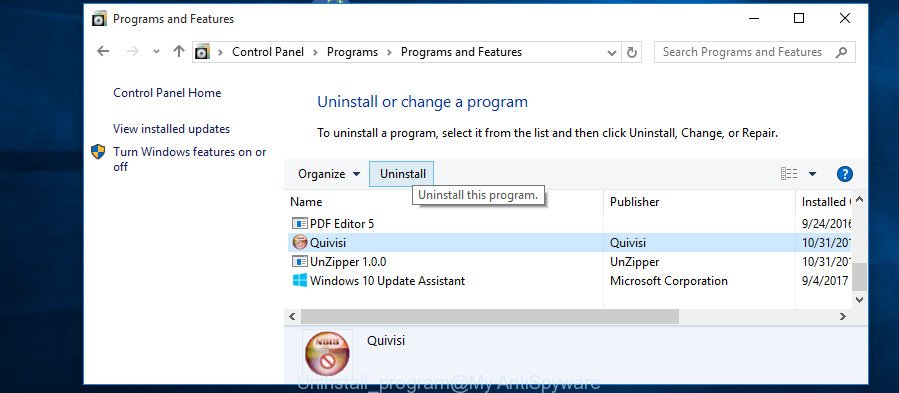
Look around the entire list of apps installed on your personal computer. Most likely, one of them is the virus and other security threats. Choose the dubious program or the application that name is not familiar to you and remove it.
Windows Vista, 7
From the “Start” menu in MS Windows, select “Control Panel”. Under the “Programs” icon, choose “Uninstall a program”.

Select the suspicious or any unknown applications, then click “Uninstall/Change” button to remove this undesired application from your PC.
Windows XP
Click the “Start” button, select “Control Panel” option. Click on “Add/Remove Programs”.
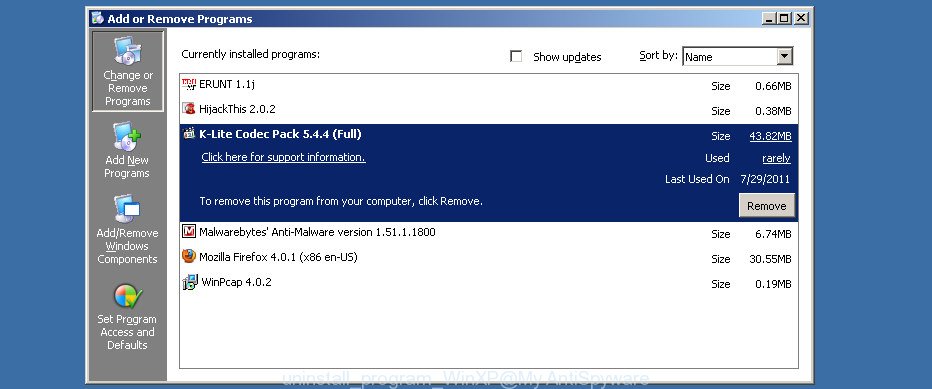
Select an unwanted program, then press “Change/Remove” button. Follow the prompts.
Run Zemana to delete Trojan.HTML.Phish virus
We recommend using the Zemana Free that are completely clean your computer of the Trojan.HTML.Phish. The tool is an advanced malicious software removal program created by (c) Zemana lab. It is able to help you remove potentially unwanted programs, adware, malicious software, toolbars, ransomware and other security threats from your PC for free.
Installing the Zemana is simple. First you’ll need to download Zemana from the following link.
164754 downloads
Author: Zemana Ltd
Category: Security tools
Update: July 16, 2019
When downloading is finished, close all programs and windows on your system. Open a directory in which you saved it. Double-click on the icon that’s called Zemana.AntiMalware.Setup as shown below.
![]()
When the installation starts, you will see the “Setup wizard” that will allow you install Zemana AntiMalware on your PC system.

Once setup is complete, you will see window as shown in the figure below.

Now press the “Scan” button . Zemana Free utility will start scanning the whole personal computer to find out the Trojan.HTML.Phish virus and other security threats. A system scan may take anywhere from 5 to 30 minutes, depending on your PC system. During the scan Zemana will search for threats present on your computer.

Once Zemana Anti-Malware has finished scanning, the results are displayed in the scan report. Review the report and then press “Next” button.

The Zemana will get rid of the Trojan.HTML.Phish and other kinds of potential threats like malicious software and potentially unwanted applications and move threats to the program’s quarantine.
Get rid of Trojan.HTML.Phish virus and malicious extensions with HitmanPro
Hitman Pro will help delete virus related files, folders and registry keys that slow down your system. The browser hijacker infections, adware and other PUPs slow your internet browser down and try to mislead you into clicking on shady advertisements and links. HitmanPro removes the virus and lets you enjoy your system without Trojan.HTML.Phish.
Installing the Hitman Pro is simple. First you will need to download HitmanPro on your system from the link below.
Download and run Hitman Pro on your PC. Once started, click “Next” button for checking your system for the virus and other malware and PUPs. Depending on your personal computer, the scan can take anywhere from a few minutes to close to an hour. While the Hitman Pro tool is checking, you can see number of objects it has identified as being infected by malicious software..
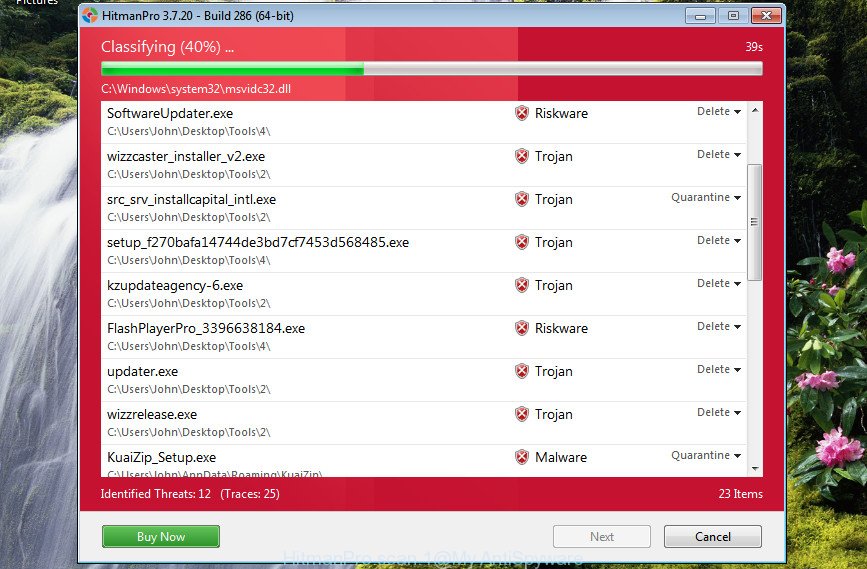
As the scanning ends, Hitman Pro will show a scan report.
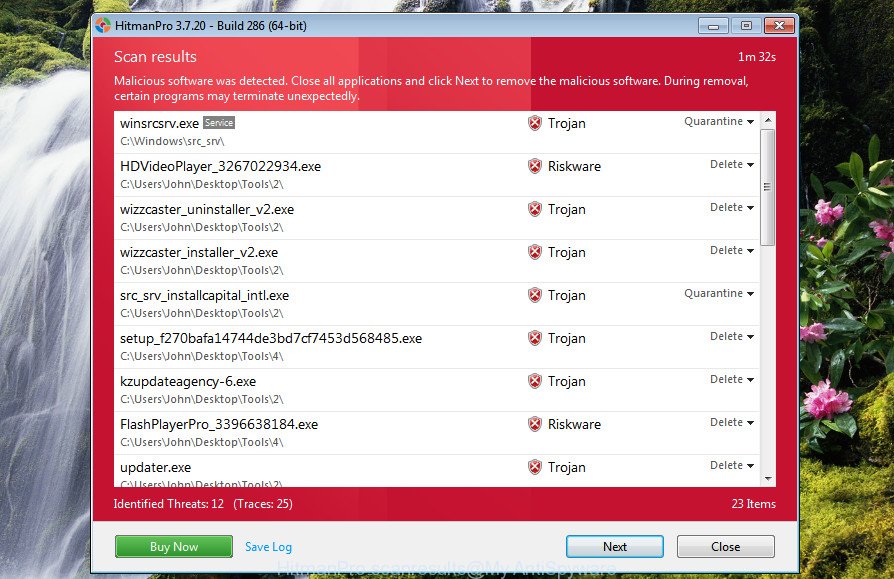
Next, you need to click Next button.
It will open a prompt, press the “Activate free license” button to start the free 30 days trial to remove all malware found.
Automatically get rid of Trojan.HTML.Phish virus with MalwareBytes
Manual Trojan.HTML.Phish virus removal requires some computer skills. Some files and registry entries that created by the virus can be not fully removed. We suggest that run the MalwareBytes Anti Malware (MBAM) that are completely free your PC of virus. Moreover, this free application will allow you to remove malware, PUPs, ad-supported software and toolbars that your system can be infected too.
MalwareBytes Free can be downloaded from the following link. Save it on your MS Windows desktop.
327021 downloads
Author: Malwarebytes
Category: Security tools
Update: April 15, 2020
Once downloading is complete, close all apps and windows on your machine. Open a directory in which you saved it. Double-click on the icon that’s called mb3-setup like below.
![]()
When the installation begins, you will see the “Setup wizard” that will help you setup Malwarebytes on your computer.
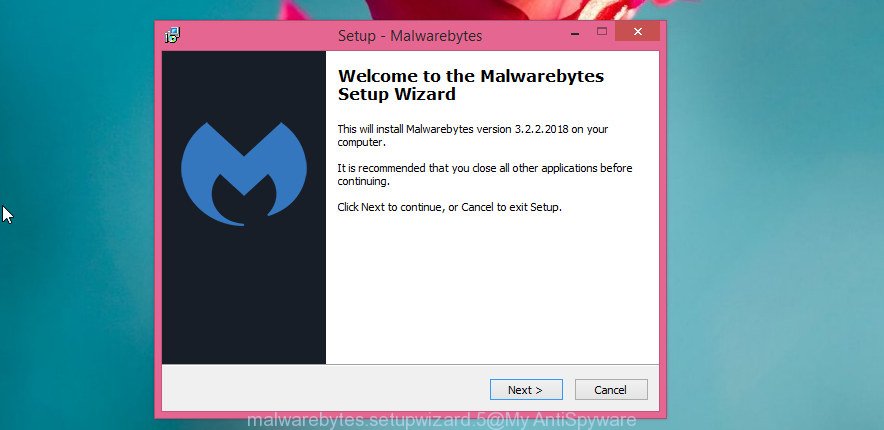
Once installation is complete, you’ll see window as shown on the image below.
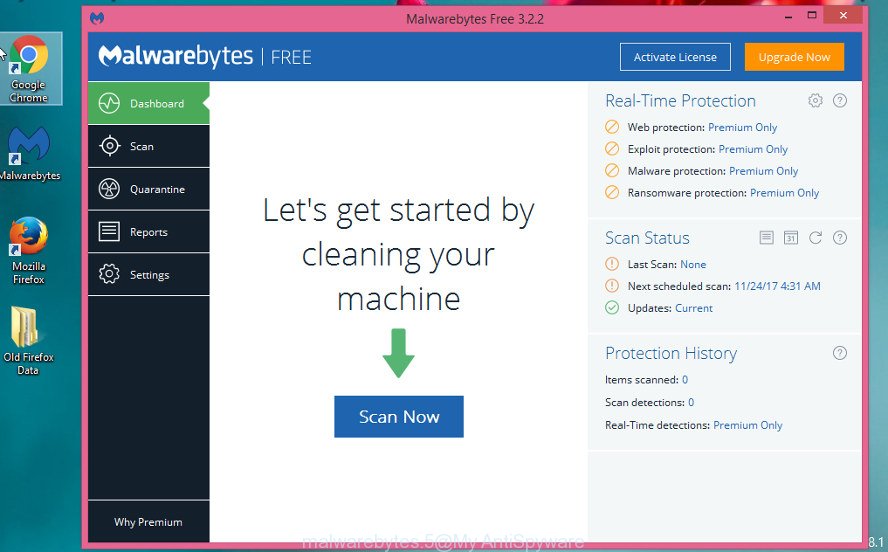
Now click the “Scan Now” button to perform a system scan for the Trojan.HTML.Phish virus related files, folders and registry keys. This procedure can take some time, so please be patient. During the scan MalwareBytes Anti-Malware will look for threats present on your personal computer.
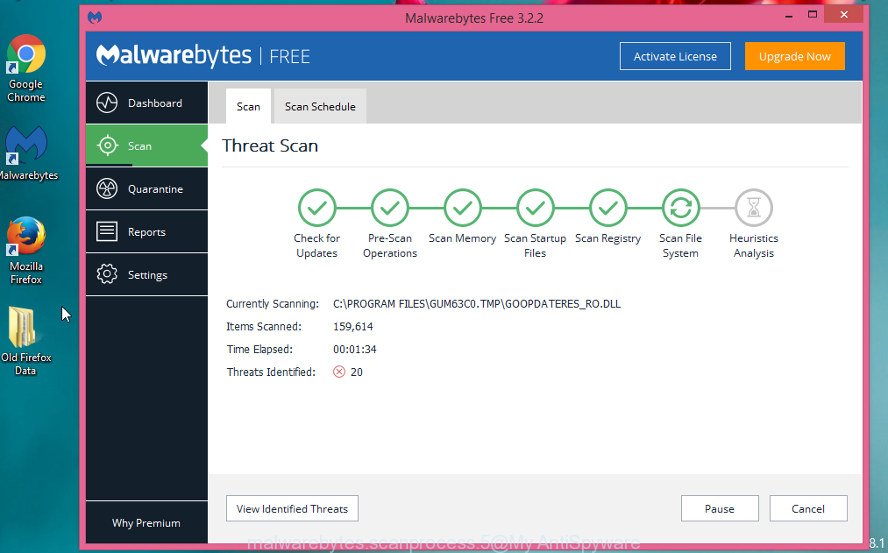
After MalwareBytes completes the scan, a list of all items found is prepared. Review the results once the utility has finished the system scan. If you think an entry should not be quarantined, then uncheck it. Otherwise, simply click “Quarantine Selected” button.
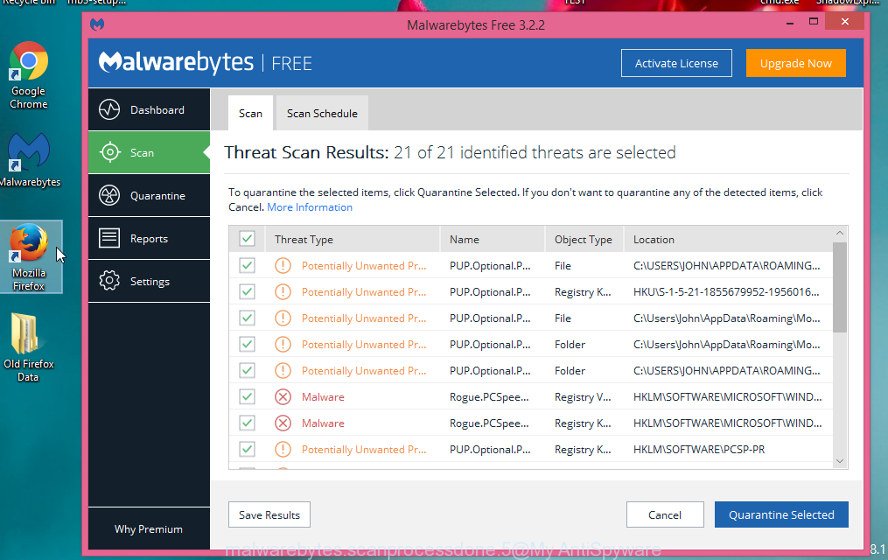
The Malwarebytes will now get rid of the Trojan.HTML.Phish and other kinds of potential threats such as malware and potentially unwanted apps and add threats to the Quarantine. Once the procedure is finished, you may be prompted to restart your personal computer.

The following video explains step-by-step tutorial on how to delete hijacker, ad-supported software and other malicious software with MalwareBytes Anti Malware.
Remove Trojan.HTML.Phish virus from Internet Explorer
If you find that Internet Explorer browser settings had been infected by the Trojan.HTML.Phish , then you may restore your settings, via the reset web browser process.
First, open the Microsoft Internet Explorer. Next, click the button in the form of gear (![]() ). It will show the Tools drop-down menu, click the “Internet Options” as on the image below.
). It will show the Tools drop-down menu, click the “Internet Options” as on the image below.

In the “Internet Options” window click on the Advanced tab, then click the Reset button. The Microsoft Internet Explorer will display the “Reset Internet Explorer settings” window as shown in the following example. Select the “Delete personal settings” check box, then press “Reset” button.

You will now need to restart your computer for the changes to take effect.
Delete Trojan.HTML.Phish virus from Mozilla Firefox
The Firefox reset will remove modified preferences, extensions and security settings. However, your saved passwords and bookmarks will not be changed, deleted or cleared.
Launch the Mozilla Firefox and click the menu button (it looks like three stacked lines) at the top right of the web browser screen. Next, press the question-mark icon at the bottom of the drop-down menu. It will open the slide-out menu.
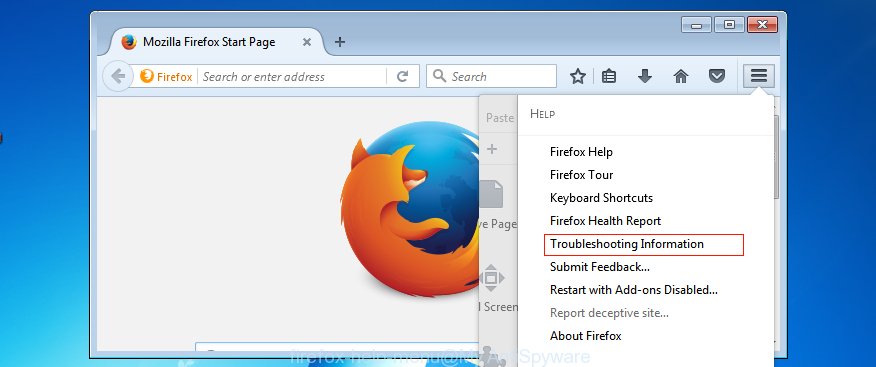
Select the “Troubleshooting information”. If you’re unable to access the Help menu, then type “about:support” in your address bar and press Enter. It bring up the “Troubleshooting Information” page as shown in the following example.
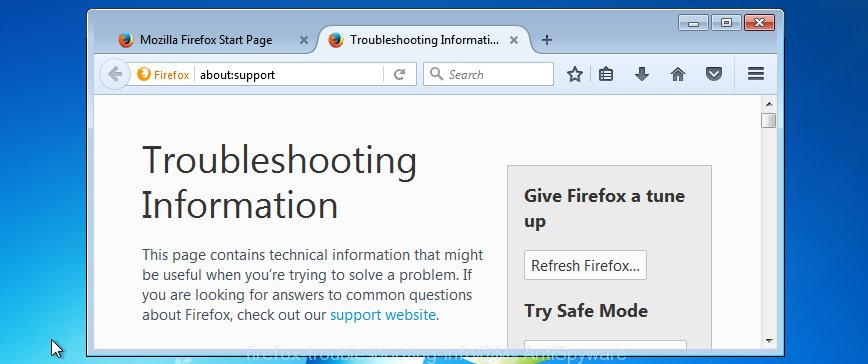
Click the “Refresh Firefox” button at the top right of the Troubleshooting Information page. Select “Refresh Firefox” in the confirmation prompt. The Firefox will begin a procedure to fix your problems that caused by the Trojan.HTML.Phish virus. Once, it’s finished, press the “Finish” button.
Remove Trojan.HTML.Phish from Chrome
Reset Chrome settings to delete changes to web-browser settings created by Trojan.HTML.Phish . If you are still experiencing issues with malware, you need to reset Google Chrome browser to its default values. This step needs to be performed only if virus has not been removed by the previous steps.
First start the Google Chrome. Next, press the button in the form of three horizontal dots (![]() ).
).
It will display the Google Chrome menu. Choose More Tools, then click Extensions. Carefully browse through the list of installed extensions. If the list has the extension signed with “Installed by enterprise policy” or “Installed by your administrator”, then complete the following steps: Remove Google Chrome extensions installed by enterprise policy.
Open the Chrome menu once again. Further, click the option named “Settings”.

The web-browser will show the settings screen. Another method to display the Google Chrome’s settings – type chrome://settings in the web-browser adress bar and press Enter
Scroll down to the bottom of the page and press the “Advanced” link. Now scroll down until the “Reset” section is visible, as displayed in the following example and click the “Reset settings to their original defaults” button.

The Google Chrome will open the confirmation dialog box as shown on the image below.

You need to confirm your action, click the “Reset” button. The web-browser will start the procedure of cleaning. Once it is done, the browser’s settings including start page, newtab and search provider by default back to the values that have been when the Google Chrome was first installed on your PC.
Use AdBlocker to stay safe online
To put it simply, you need to use an ad blocker tool (AdGuard, for example). It’ll stop and protect you from all annoying sites, advertisements and pop-ups. To be able to do that, the ad-blocker program uses a list of filters. Each filter is a rule that describes a malicious web-page, an advertising content, a banner and others. The ad blocker application automatically uses these filters, depending on the web pages you’re visiting.
Please go to the link below to download the latest version of AdGuard for Microsoft Windows. Save it directly to your Microsoft Windows Desktop.
26831 downloads
Version: 6.4
Author: © Adguard
Category: Security tools
Update: November 15, 2018
When the downloading process is finished, double-click the downloaded file to start it. The “Setup Wizard” window will show up on the computer screen as on the image below.

Follow the prompts. AdGuard will then be installed and an icon will be placed on your desktop. A window will show up asking you to confirm that you want to see a quick guide like below.

Click “Skip” button to close the window and use the default settings, or click “Get Started” to see an quick guidance which will help you get to know AdGuard better.
Each time, when you start your PC, AdGuard will run automatically and block pop up ads, as well as other malicious or misleading web-pages. For an overview of all the features of the program, or to change its settings you can simply double-click on the AdGuard icon, which is located on your desktop.
Finish words
Now your personal computer should be free of the Trojan.HTML.Phish virus. We suggest that you keep AdGuard (to help you stop unwanted advertisements and undesired harmful web-pages) and Zemana Anti Malware (ZAM) (to periodically scan your system for new malicious software). Probably you are running an older version of Java or Adobe Flash Player. This can be a security risk, so download and install the latest version right now.
If you are still having problems while trying to get rid of Trojan.HTML.Phish virus from your computer, then ask for help here here.



















